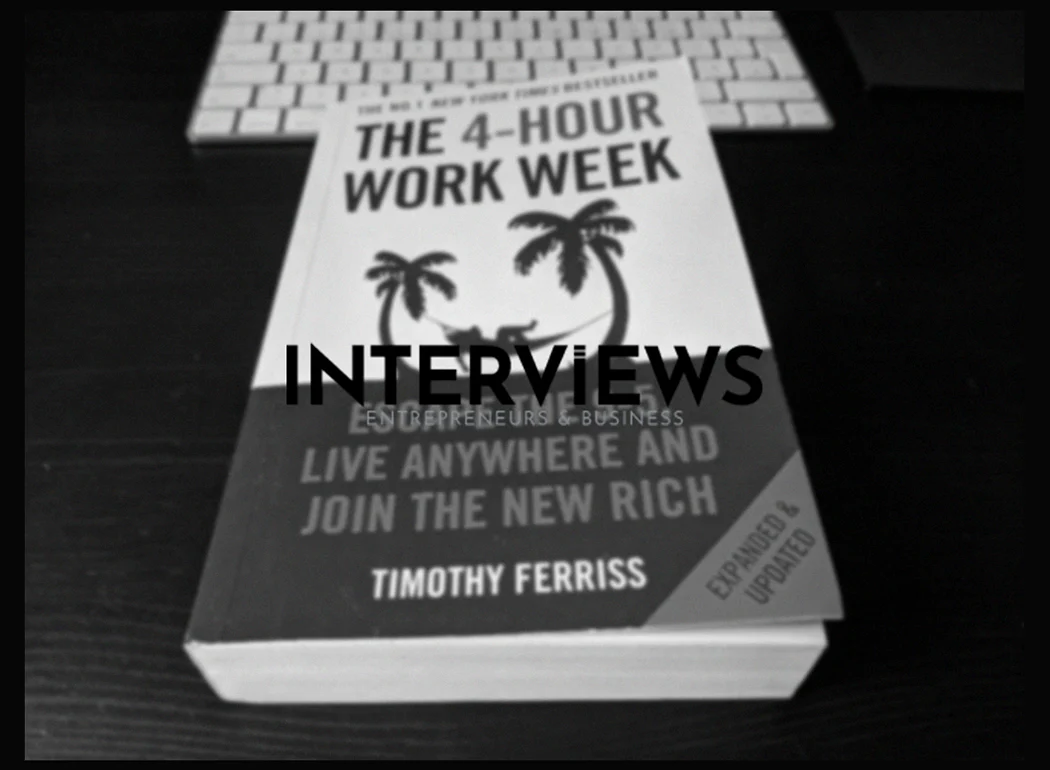Decoding the 4-Hour Work Week: More Than Just a Catchy Title
The title “The 4-Hour Work Week” catches your eye like a free pizza sign. Timothy Ferriss wrote this book in 2007. It’s more than fewer hours. This book is a manifesto against the 9-to-5 work culture. It urges you to change outdated views and create a life worth living.
What’s the 4-Hour Work Week Really About?
This book isn’t just about lounging on a beach. The main idea is to rethink your work and life. It focuses on:
- Challenging the Old Guard: Why stay at a desk for over 40 hours? Ferriss questions norms. He wants readers to consider their choices and how they benefit them.
- Building a Life, Not Just a Living: It’s about creating a lifestyle with experiences and freedom, not just income. This means time for passions rather than fitting them in after work.
- Escaping the Corporate Maze: Feel trapped at work? This book shows you how to break free. Create businesses that support your dreams. No lottery or trust fund needed.
The Book Deets: Need-to-Know Facts
For readers interested in the details:
- Author: Timothy Ferriss
- Title: The 4-Hour Workweek: Escape 9–5, Live Anywhere, and Join the New Rich (Original Edition 2007)
- Publisher: Vermilion
- Edition: It’s the 40017th edition (or maybe a less dramatic updated version).
- Page Count: A substantial 396 pages in paperback.
Decoding the Matrix: Key Concepts for the “New Rich”
Ferriss talks about the “New Rich” (NR) mindset. This isn’t about money. The NR are defined by their freedom. Here are some key principles for NR status:
- Redefining Work Rules: NR individuals know 9-to-5 isn’t a requirement. They write their own rules. If you want to join them, question everything.
- The Low-Information Diet: Productivity can thrive without constant media noise. This diet focuses on strategic ignorance. Cut the clutter, sharpen focus. Ferriss coined this term to emphasize selective attention.
- The 80/20 Rule (Pareto Principle): This isn’t just business talk; it’s about life. 80% of results come from 20% of efforts. Identify that important 20%, prioritize it fiercely, and watch your time multiply. Focus on key tasks, ignore the unimportant.
- D.E.A.L. Framework: This is the actionable core of the 4-Hour Work Week. D.E.A.L. stands for:
- Define: Know your goals and what you want.
- Eliminate: Cut out time-killers.
- Automate: Create systems that run themselves.
- Delegate: Outsource tasks that drain you.
A literal 4-hour week may not happen, but the D.E.A.L. framework boosts efficiency.
- Creating Automated Income Streams: Think of passive businesses that work even while you sleep. Ferriss highlights systems that function independently, freeing you from daily tasks.
Putting it into Practice: Implementing a Radically Efficient Work Life
Theory is good, but how can you apply this? Here’s how to aim for a 4-Hour Work Week (or at least a more manageable one):
- High-Impact Task Focus: Avoid busywork. Focus on essential tasks that make a difference. Seek leverage, not just effort.
- Eliminate, Automate, Delegate (Repeat): Embrace this mantra. Cut what’s unnecessary, automate repeat tasks, and delegate what you can. Take back your time.
- Embrace Freedom and Flexibility: This isn’t about laziness; it’s about control. Control your time, location, and how you spend your life.
- Experiment and Iterate: There’s no single solution that fits all. Try various strategies, see what works for you, and improve continuously.
- Quality over Quantity (Always): Longer hours don’t guarantee results. Smarter work and focus beat brute force always.
Beyond the 9-to-5: Exploring Reduced Work Schedules
The 4-Hour Work Week is an ideal but there are many variations of reduced work schedules. Here are some options:
- The 4-Day Work Week: The classic approach with variations:
- 4 x 8-hour days (32 hours): A compact week.
- 5 x 6-hour days (30 hours): Shorter days structured like a week.
- 4 x 10-hour days (40 hours): Longer days for extended weekends.
- 9/80 Work Schedule: Complete 80 hours in nine days over two weeks. Enjoy an extra day off every other week.
- 9/72 Work Schedule: Similar to 9/80, but limited to 72 hours over two weeks with 8-hour days. Enjoy every other Friday off.
- Compressed Hours: Fit your hours into longer days for shorter weeks. Flexibility is key.
- 4-5-5-4 Shift Schedule: A rotating pattern giving longer weekends. It keeps things interesting.
- 4 on 3 off 3 on 4 off Shift Pattern: Balances work with time off. Enjoy consistent breaks for harmony.
- 4-5-5-4 Lifestyle Roster: For example, 4 days on, then 5 off, then repeat. This shows real-life application of these patterns.
The Man Behind the Method: Decoding Tim Ferriss
Who is Tim Ferriss? He’s more than just an author:
- Author, Activist, Entrepreneur: A modern-day Renaissance person.
- Source of Wealth: His wealth stems from various ventures:
- Entrepreneurial Ventures: Started with BrainQUICKEN, an online supplement firm.
- Best-Selling Author: “The 4-Hour Workweek” is just the beginning. He wrote “Tribe of Mentors” and “Tools of Titans.”
- Angel Investing and Startup Advising: Active in advising Airbnb, Twitter, and Duolingo.
- Podcast King: “The Tim Ferriss Show” has over 900 million downloads, showcasing his interviewing skills.
- Audiobook Publishing: Expands his reach via publishing.
- Net Worth: Around $100 million shows his principles can yield financial success.
- Sleep Habits: Disciplined with 7.5 hours of sleep nightly plus a nap around 3-4 PM.
Beyond the 4-Hour Title: Related Concepts & Rules
The “4-Hour” concept appears in other contexts:
- 4-Hour Work Rule: Suggests four hours max is optimal for focus and processing information. Think focused sprints over long sessions.
- 4-Hour Body Diet: Another Ferriss idea, requiring four meals a day with allowable foods based on efficiency principles.
- The 4000 Hour Rule (YouTube): YouTube requires 4,000 hours of video views in a year to monetize. A different “4000 hour rule” showing diverse applications of time metrics.
The Shorter Week Experiment: Global Edition
The 4-Hour Work Week inspires real changes in several countries testing reduced hours:
- Germany
- Iceland (notable successes)
- Spain
- Portugal
- Belgium
- Lithuania
- The Netherlands (shortest average work week)
- Norway
- Denmark
- Austria
These countries explore 32-hour weeks, suggesting a movement towards valuing work-life balance more than hours worked.
Reality Check: Criticisms and Considerations
The “4-Hour Work Week” isn’t perfect. Let’s be realistic:
- The Myth of the Literal 4-Hour Week: Honestly, working only four hours isn’t practical for many.
- Work is What You Do, Not Where You Are: The key takeaway is focus on productivity over presence. Work is now untethered from location, showing a new trend.
- Potential Downsides of 4-Day Work Week: Shorter schedules have challenges:
- Increased Stress: Fitting work into fewer days can raise stress levels.
- Customer Satisfaction Risks: Shorter hours may harm customer service if not managed well.
- Communication Hurdles and Reduced Availability: Scheduling and coverage become complicated with fewer hours.
The “4-Hour Work Week” serves as a framework for rethinking work and life strategies. It’s about efficiency, questioning norms, and crafting a life with freedom and fulfillment. Whether you reach a literal 4-hour week or just cut back hours while enhancing output, the principles hold value in our demanding world. Time to automate and delegate tasks.




